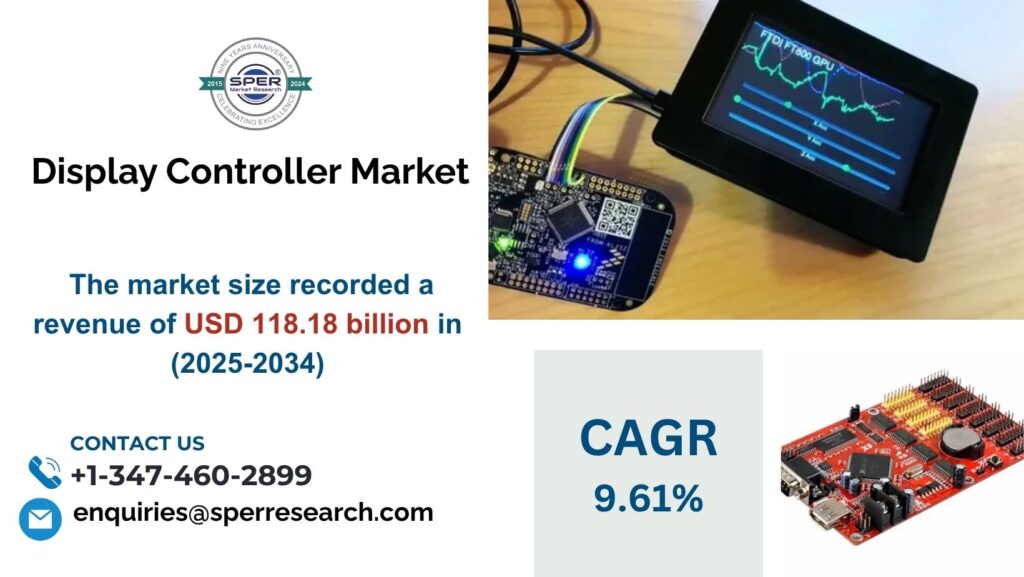Display Controller Market Share, Demand and Growth Analysis 2034

A display controller is a critical electronic component that manages and controls the visual information output by display devices and e-paper screens. It serves as an interface between a computational device (such as a microprocessor or graphics processing unit) and the display panel. The controller analyzes digital data from the source, transforms it to the appropriate format, and generates the timing signals required for pixel activation and color rendering. Modern display controllers frequently include complex capabilities like brightness control, color correction, touch interface compatibility, and battery management to improve performance and visual quality. They serve an important role in a wide range of devices, from smartphones, tablets, and laptops to industrial monitors and televisions, providing precise, smooth, and efficient visual output.
According to SPER Market Research, ‘Global Display Controller Market Size– By Type, By End-User – Regional Outlook, Competitive Strategies and Segment Forecast to 2034’ state that the Global Display Controller Market is predicted to reach 118.18 billion by 2034 with a CAGR of 9.61%.
DRIVERS:
Rapid improvements in display technologies like as OLED, LCD, and MicroLED, which improve visual quality on smartphones, tablets, TVs, and monitors, are driving the Global Display Controller Market. Consumer demand for high-resolution, energy-efficient displays with higher color accuracy drives manufacturers to develop, resulting in a greater requirement for advanced display controllers. The growing popularity of smart devices, such as wearables and smart home appliances, drives market growth since these devices require improved display technologies to create interactive and visually appealing interfaces. Furthermore, the car industry’s integration of infotainment, navigation, and ADAS displays is driving up need for dependable display controllers. Emerging AR and VR applications also add to the need for improved visual processing skills. Continuous R&D and the proliferation of next-generation display technologies keep the industry growing.
Display Controller Market Sample in PDF Format, Click Here
RESTRAINTS:
A significant constraint in the global Display Controller Market is a lack of skilled labor. The intricacy of modern display technologies necessitates competence in semiconductor design, digital signal processing, firmware development, and system integration, but the industry is short of skilled personnel. Rapid improvements in display technology increase the need for specialized knowledge, exacerbating the difficulty. This shortage has an influence on firms’ capacity to attract and retain people, raising competition for a small pool of expertise. As a result, project time frames may be pushed back, product development may lag, and innovation in display controller solutions may be hampered. Limited availability of skilled staff might also impede the industry’s ability to satisfy changing market demands while maintaining high-quality, technologically sophisticated services.
Asia-Pacific leads the global display controller market due to high electronics manufacturing, growing consumer demand for smartphones and TVs, abundant skilled labor, and strong presence of key display component manufacturers. Some of the leading companies are Analog Devices, LG Display Co., Ltd. NXP Semiconductors, Qualcomm Technologies, Inc., Samsung Electronics, STMicroelectronics, Texas Instruments, and others.
For More Information, refer to below link: –
Display Controller Market Growth
Related Reports:
Collaborative Robots Market Growth
Follow Us –
LinkedIn | Instagram | Facebook | Twitter
Contact Us:
Sara Lopes, Business Consultant — USA
SPER Market Research
enquiries@sperresearch.com
+1–347–460–2899





